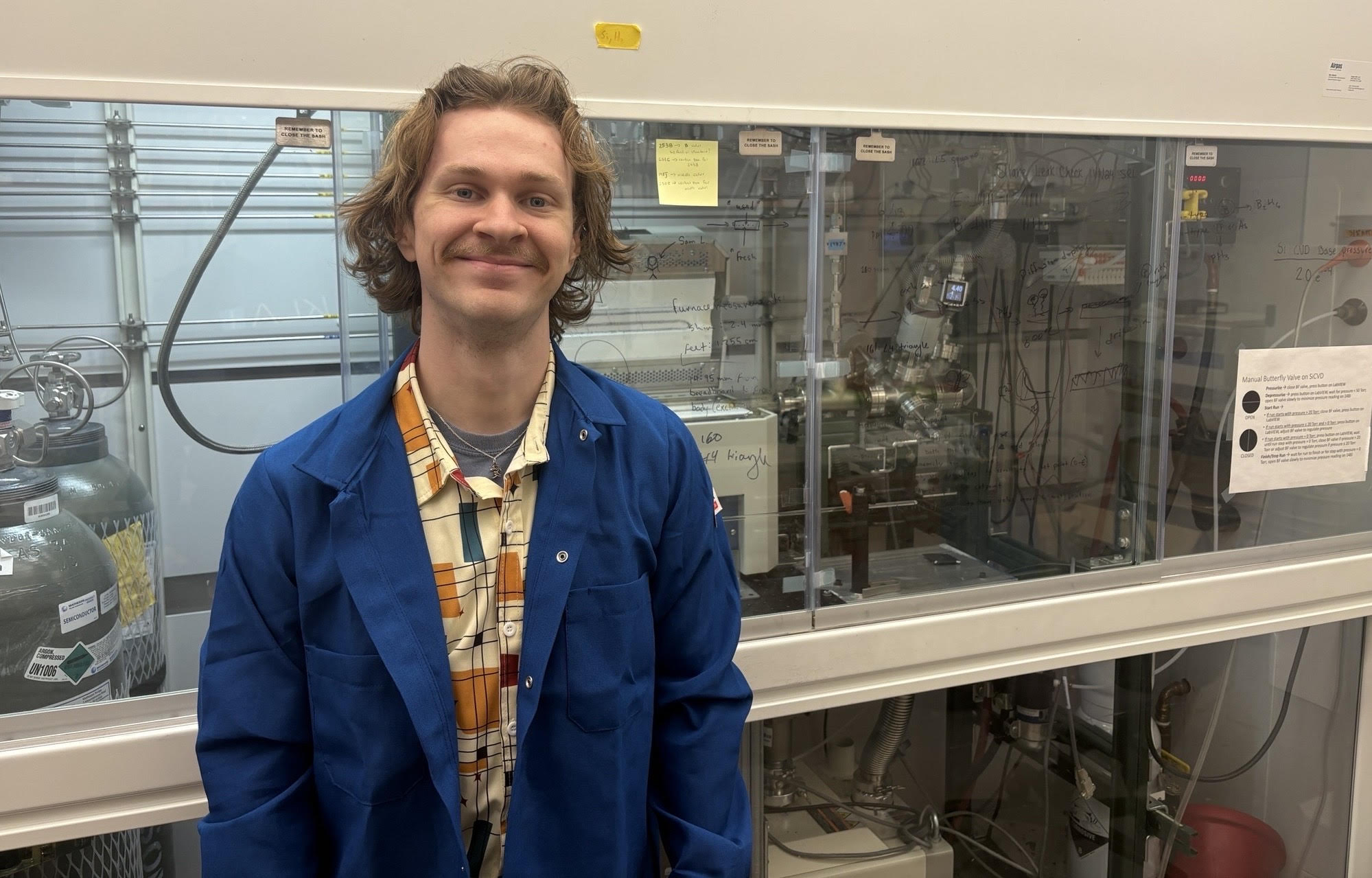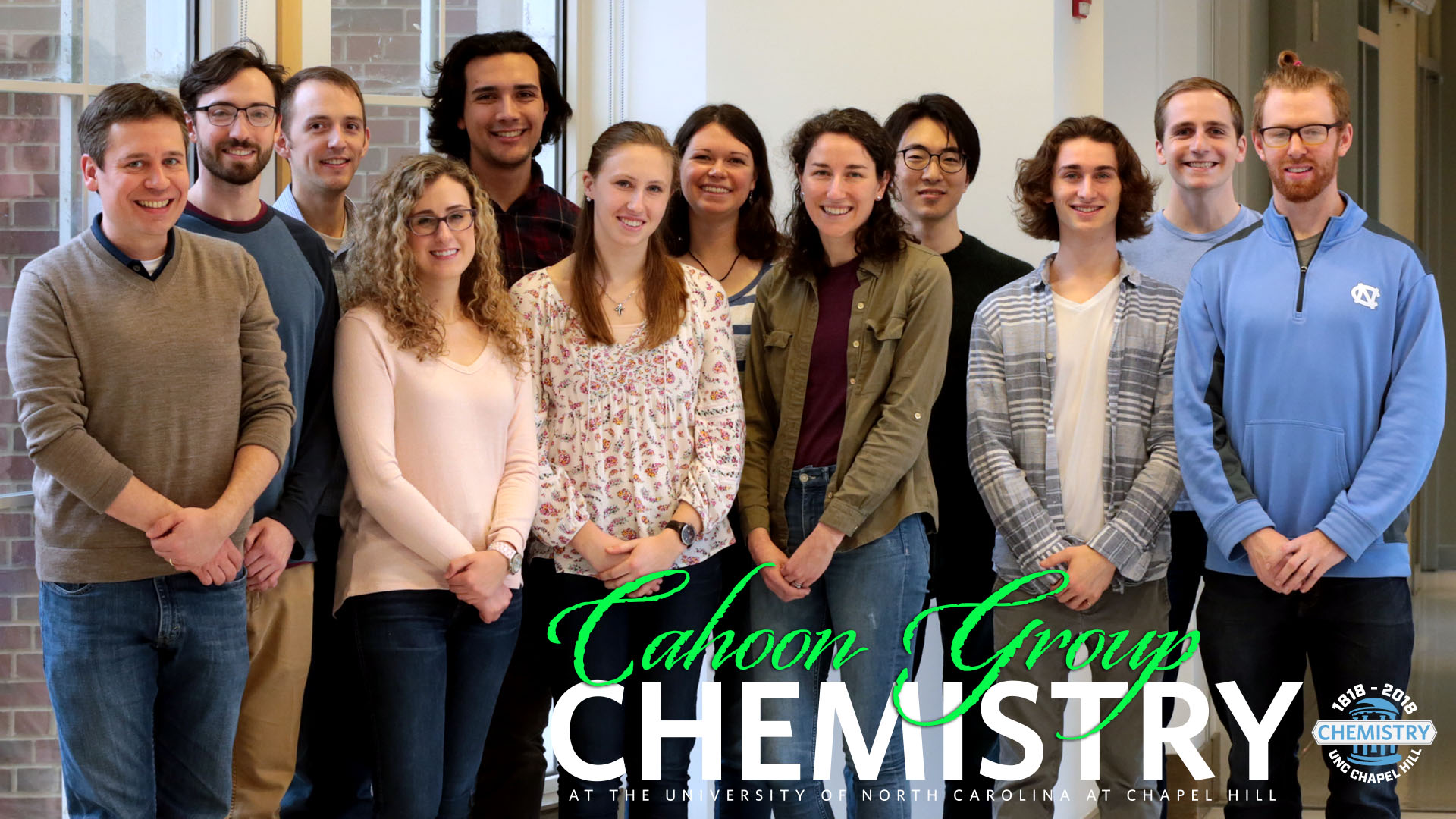
James Cahoon
Professor of Chemistry and Department Chairperson
For Chair related inquiries, please contact chemchair@unc.edu
Caudill Laboratories 19 and 257B (Chair's Office)919-962-3386, 919-962-4358
jfcahoon@unc.edu
Group Website
Curriculum Vitae
Research Interests
Nanomaterials/Nanowire Synthesis, Solar & Thermal Energy, Photonics
Research Synopsis
My research program is focused on the chemical synthesis of semiconductor nanomaterials with unique physical properties that can enable a range of technologies, from solar cells to solid-state memory. My Ph.D. background is in experimental physical chemistry, and my post-doctoral training focused on nanomaterial synthesis, a topic at the border of physical chemistry, inorganic materials, and engineering.
At UNC, I have combined these backgrounds to develop a research program that emphasizes nanomaterials synthesis coupled with detailed physical characterization and computational modeling. By combining these three key areas - synthesis, measurement, and modeling - we have a general strategy to develop new materials with specific properties and function under the overarching theme "morphology encodes function."
Because the materials we develop have dimensions on the nanometer length scale, subtle changes in size, geometry, and composition have profound influence on the optical and electrical characteristics of the materials; thus, we use morphology as a tool to rationally encode specific physical properties, which we predict and model through computation.
The research areas and directions currently pursued include:
1. Synthesis
We develop new methods and tools for the synthesis of semiconductor nanomaterials. For example, we constructed a new class of chemical vapor deposition system that uses heat, light, or electric plasmas to drive nanomaterial formation from organic and inorganic vapor-phase and solid-state precursors. We study the fundamental mechanisms of nanomaterial growth processes, for instance, by combining kinetic measurements with models that identify the rate-limiting steps during nanomaterial formation, enabling rational control of the growth process.
2. Measurement
We perform optical and electrical measurements on single-nanostructures as well as on ensemble systems. By measuring physical properties from the nanoscale to mesoscale to macroscale, we can understand the progressive evolution of physical characteristics. For instance, optical absorption and light scattering characteristics from isolated nano-objects progressively change when placed in 1-dimensional arrays or arranged into 2-dimensional periodic structures.
3. Modeling
Finite-element and ab-initio computational modeling is used to create realistic, three-dimensional representations of our semiconductor nanomaterials. We apply physics, as needed, in our models to both interpret physical measurements and to predict new properties that guide the synthesis of materials. Two key areas in which we apply our models are optics, in which we can use full electromagnetic wave simulations to predict absorption, scattering, and waveguiding properties, and electronics, in which we use simulations to predict the flow of current, charge carrier diffusion and recombination processes, etc, within single nanostructures.
4. Photonics
We design and characterize semiconductor structures that fulfill specific photonic or plasmonic functions. For instance, we chemically synthesize structures that can be used for surface-enhanced Raman spectroscopy or as photonic-crystal cavities. We also examine the plasmonic characteristics of degenerately-doped semiconductors, such as phosphorus-doped silicon nanowires, which can serve as a new class of materials to control light propagation at sub-diffraction-limited length scales.
5. Electronics
Using our ability to dope semiconductor nanostructures and chemically encode morphology, we are developing electronic devices with specific functionality. For example, we have created nanowires with constrictions that behave as non-volatile memory and exhibit a resistive-switching effect. In addition, we have created nanowire photodiode detectors with wavelength-tunable response by encoding p-n junctions in nanowires with specific diameters and morphologies that exhibit high-Q optical resonances in the visible to near-infrared wavelength ranges.
6. Photovoltaics
We are developing advanced photovoltaic devices based on nanostructured, quantum-confined group IV materials. Through a combination of thermal and plasma-enhanced chemical vapor deposition, we can synthesize nanowires and quantum-dots within the same reactor to create complex, hybrid materials with characteristics length scales from a few nanometers to tens of microns - all within the same structure. These efforts lay the groundwork for a new class of generation III photovoltaic devices.
7. Solar Fuels
Our efforts are integrated with the UNC Energy Frontier Research Center for Solar Fuels to develop p-type metal-oxide nanomaterials with morphologies and compositions designed for integration with molecular dyes and catalysts in solar fuel devices. For instance, using a nanoplatelet morphology, we have improved charge carrier mobilities by one order of magnitude, and using core/shell structures, for example NiO/Al2O3; NiO/Cu2O, we have improved charge carrier lifetimes by three orders of magnitude.
8. Dynamics
Through a joint effort with Prof. John Papanikolas at UNC-Chemistry, we are using ultrafast microscopy to probe fundamental charge carrier dynamics in single nanostructures on the femtosecond, picosecond, and nanosecond time scales. By combining the microscopy with rationally-designed materials and computational modeling of the dynamics, we have a comprehensive strategy to understand the dependence charge carrier flow and recombination on parameters such as composition, size, strain, etc, in single nano-objects.
Professional Background
B.S. Chemistry & Philosophy, College of William and Mary, 2003; Ph.D. Physical Chemistry, University of California-Berkeley, 2008; IC Postdoctoral Fellow, Harvard University, 2009-2011; Barry M. Goldwater Scholarship, 2002; National Science Foundation Graduate Research Fellowship, 2004; ACS Physical Chemistry Division Post-doctoral Research Award, 2010; Packard Fellowship for Science and Engineering, 2014; Sloan Research Fellowship, 2015; Cottrell Scholar Award, 2015; NSF CAREER Award, 2016
For Chair related inquiries, please contact chemchair@unc.edu
Research Group
News & Publications

When James Custer arrived at UNC-Chapel Hill to begin his Ph.D. in chemistry, he didn’t know he was about to launch a career that would take him from high-stakes scientific discovery to global clean energy negotiations.

Will Hemmingson, a Ph.D. student in the Department of Chemistry, presented his team’s latest work: a particle suspension reactor that uses sunlight, silicon nanowires and clever chemistry to make carbon dioxide reduction more efficient, affordable and durable than previous designs.


